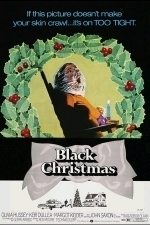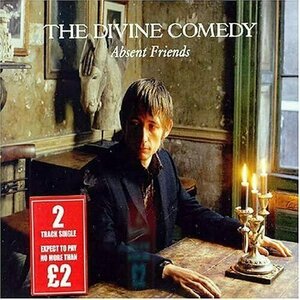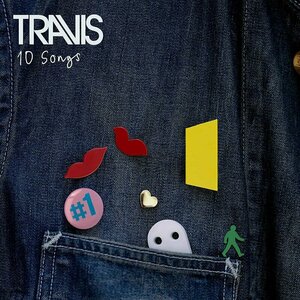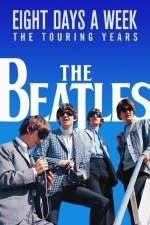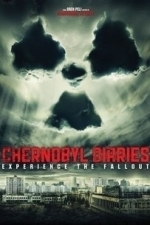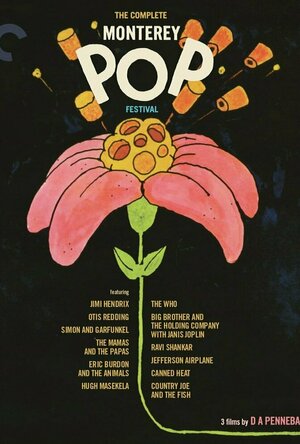Search
Matthew Krueger (10051 KP) rated Black Christmas (1974) in Movies
Dec 11, 2019
Answer The Phone
With anethor remake coming out this friday, and that i already reviewed the 2006 remake. In going back to the oringal, were it alll started from. So lets take a little trip back to 1974.
Inspired by the urban legend "The babysitter and the man upstairs" and a series of murders that took place in the Westmount section of Montreal, Quebec, Moore wrote the screenplay under the title Stop Me.
The Plot: As winter break begins, a group of sorority sisters, including Jess (Olivia Hussey) and the often inebriated Barb (Margot Kidder), begin to receive anonymous, lascivious phone calls. Initially, Barb eggs the caller on, but stops when he responds threateningly. Soon, Barb's friend Claire (Lynne Griffin) goes missing from the sorority house, and a local adolescent girl is murdered, leading the girls to suspect a serial killer is on the loose. But no one realizes just how near the culprit is.
Margot Kidder remembered shooting the film as being "fun. I really bonded with Andrea Martin, filming in Toronto and Ontario. Olivia Hussey was a bit of an odd one. She was obsessed with the idea of falling in love with Paul McCartney through her psychic. We were a little hard on her for things like that.
Black Christmas eventually gained a cult following and is notable for being one of the earliest slasher films. It went on to inspire other slasher films, the biggest one of all being John Carpenter's Halloween (which was apparently inspired by Clark suggesting what a Black Christmas sequel would be like).
Black Christmas has been included multiple lists in various media outlets as one of the greatest horror films ever made. The film ranked No. 87 on Bravo's The 100 Scariest Movie Moments.
A overall classic slasher horror movie based around a hoilday.
Inspired by the urban legend "The babysitter and the man upstairs" and a series of murders that took place in the Westmount section of Montreal, Quebec, Moore wrote the screenplay under the title Stop Me.
The Plot: As winter break begins, a group of sorority sisters, including Jess (Olivia Hussey) and the often inebriated Barb (Margot Kidder), begin to receive anonymous, lascivious phone calls. Initially, Barb eggs the caller on, but stops when he responds threateningly. Soon, Barb's friend Claire (Lynne Griffin) goes missing from the sorority house, and a local adolescent girl is murdered, leading the girls to suspect a serial killer is on the loose. But no one realizes just how near the culprit is.
Margot Kidder remembered shooting the film as being "fun. I really bonded with Andrea Martin, filming in Toronto and Ontario. Olivia Hussey was a bit of an odd one. She was obsessed with the idea of falling in love with Paul McCartney through her psychic. We were a little hard on her for things like that.
Black Christmas eventually gained a cult following and is notable for being one of the earliest slasher films. It went on to inspire other slasher films, the biggest one of all being John Carpenter's Halloween (which was apparently inspired by Clark suggesting what a Black Christmas sequel would be like).
Black Christmas has been included multiple lists in various media outlets as one of the greatest horror films ever made. The film ranked No. 87 on Bravo's The 100 Scariest Movie Moments.
A overall classic slasher horror movie based around a hoilday.
Tom Chaplin recommended Absent Friends by The Divine Comedy in Music (curated)
Bob Mann (459 KP) rated The Beatles: Eight Days A Week - The Touring Years (2016) in Movies
Sep 29, 2021
A film worth getting into your life.
Reviewing documentaries is always a bit tricky, since it is often difficult to separate the quality of the film making from your emotional attachment to the subject material. In my case, my early life was saturated with Beatlemania. Although I was only 2 year’s old in 1963 at the start of it all, I had three older siblings who ramped up the excitement so much that it permeated my young mind. I still remember being vehemently “Sssshhed” since I was making too much noise during the live and ground-breaking “All you need is Love” telecast!
Ron Howard’s film focuses on “the touring years” which as depicted were truly manic, spanning from 1963 to 1966 before then skipping forward to 1969 for their final rooftop concert. This was in a time when airline travel was not the more comfortable and smoke-free environment it is today, so these worldwide trips much have been seriously grueling, even without the adoration that reached dangerous proportions when they reached their destinations.
Howard has clearly had his research team scour the world for archive clips since – whilst sensitively skipping some of the more ‘commonly seen’ materials, like the “jewelry shaking” clip – the film shows concert action I certainly had never seen before.
The film is also nicely interlaced with celebrity cameos recalling their linkage to the Fab Four’s performances (often moving, like Whoopi Goldberg’s) and the group’s “legacy” effect on modern-day art (in Richard Curtis’s case rather less convincing). One of the most striking of these is that of Sigourney Weaver recounting her attendance as a pre-teen at the Beatle’s Rose Bowl performance in LA. There, in the newsreel footage of adoring fans, is the unmistakable face of the ‘before she was famous’ actress: at least I hope it really was her (as the clip’s timing implied) and not a lookalike, since that would be really disappointing!
Also featuring – although not enough for my liking – are Paul McCartney and Ringo Starr, recounting their feelings about the events and what happened behind the closed doors of hotel rooms or – most notably – a meat truck.
What shines through is the honesty and intelligence of Lennon and McCartney, typified by the idiotic questioning of journalists, some of who had done so little homework they didn’t even know there wasn’t a Beatle called Eric! Some of the group’s off the cuff responses were priceless: “What is the secret of your success?” asks one journo. “We don’t know” quips John. “If we knew we’d form another group and be managers.”
While the film has enormous energy in its first two thirds, it rather runs out of momentum in its final reel…. a bit like the Beatles did in fact. It also has elements of gimmickry like the smoke rising from photo cigarettes which gets a tad tiresome after the tenth occurrence.
But this is a very watchable and enjoyable rock down memory lane for 50-somethings and for any fans old and young of the Fab Four’s music. Highly Recommended. Note that the documentary itself is about 90 minutes in length, with another 30 minutes of live concert music tagged onto the end post-titles (which for travel reasons I was unfortunately unable to stay for so can’t comment on).
Ron Howard’s film focuses on “the touring years” which as depicted were truly manic, spanning from 1963 to 1966 before then skipping forward to 1969 for their final rooftop concert. This was in a time when airline travel was not the more comfortable and smoke-free environment it is today, so these worldwide trips much have been seriously grueling, even without the adoration that reached dangerous proportions when they reached their destinations.
Howard has clearly had his research team scour the world for archive clips since – whilst sensitively skipping some of the more ‘commonly seen’ materials, like the “jewelry shaking” clip – the film shows concert action I certainly had never seen before.
The film is also nicely interlaced with celebrity cameos recalling their linkage to the Fab Four’s performances (often moving, like Whoopi Goldberg’s) and the group’s “legacy” effect on modern-day art (in Richard Curtis’s case rather less convincing). One of the most striking of these is that of Sigourney Weaver recounting her attendance as a pre-teen at the Beatle’s Rose Bowl performance in LA. There, in the newsreel footage of adoring fans, is the unmistakable face of the ‘before she was famous’ actress: at least I hope it really was her (as the clip’s timing implied) and not a lookalike, since that would be really disappointing!
Also featuring – although not enough for my liking – are Paul McCartney and Ringo Starr, recounting their feelings about the events and what happened behind the closed doors of hotel rooms or – most notably – a meat truck.
What shines through is the honesty and intelligence of Lennon and McCartney, typified by the idiotic questioning of journalists, some of who had done so little homework they didn’t even know there wasn’t a Beatle called Eric! Some of the group’s off the cuff responses were priceless: “What is the secret of your success?” asks one journo. “We don’t know” quips John. “If we knew we’d form another group and be managers.”
While the film has enormous energy in its first two thirds, it rather runs out of momentum in its final reel…. a bit like the Beatles did in fact. It also has elements of gimmickry like the smoke rising from photo cigarettes which gets a tad tiresome after the tenth occurrence.
But this is a very watchable and enjoyable rock down memory lane for 50-somethings and for any fans old and young of the Fab Four’s music. Highly Recommended. Note that the documentary itself is about 90 minutes in length, with another 30 minutes of live concert music tagged onto the end post-titles (which for travel reasons I was unfortunately unable to stay for so can’t comment on).
Gareth von Kallenbach (980 KP) rated Chernobyl Diaries (2012) in Movies
Aug 7, 2019
What do you get when you pair the director of “Paranormal Activity” with a handful of unknown actors, a one-hit wonder soap-star-turned-singer, and a plot based upon the Chernobyl meltdown? You guessed it: a sub-par suspense film with a poorly executed ending.
Meet Chris, Amanda, and Natalie – a trio of pretty Americans touring Europe and en route to Russia to meet Chris’ older brother, Paul, in Minsk. Unbeknownst to Amanda, Chris confides in his older brother his plan to propose to her upon their arrival in Moscow, their next destination. However, Paul decides to intervene and proposes a new plan: an extreme tourism excursion in the abandoned city of Pripyat, just outside of the Chernobyl nuclear plant. Despite Chris’ pleas, the group decides to take up Paul’s offer and embark the next day to Chernobyl/Pripyat under the guide of Uri, an ex-Soviet Special Forces agent.
Piling into an assault-van of sorts and accompanied by a pair of last minute travelers – an Aussie named Mike and his blonde Norse girlfriend, Zoe – they set off on the 2-hour drive to Pripyat. However, it is upon arrival at their destination that they find the area restricted to tourists by the Soviet guard. Undaunted, Uri drives the van to another remote access point, stealing them into the abandoned city of Pripyat for their excursion. It is there, as one can imagine, that some unknown element intercedes and prevents them from leaving the city. Somehow wires to the van’s starter are cut and they are forced to stay overnight. It’s at this point, as you can imagine, the horror movie element sets in and the typical suspense-film-plot takes over.
Of course, people leave the van to investigate “strange noises” and, of course, they are picked off one by one. As the movie progresses and the horror-film starts to settle in, the plot unravels and you’re ultimately left with one of the lamest endings conceived. Basically, you’ve had almost two hour’s worth of build-up and suspense for absolutely nothing.
Suspense-wise, you’re definitely going to jump here and there; my poor date had to suffer through my grabbing his hand and leg on more than one occasion. Acting wise, there’s nothing substantial. Jesse McCartney draws upon his experience as a soap actor for the more emotional role and Devin Kelley who plays Amanda seems more adept at sticking out her chest than acting her way out of a bag. But I digress, horror movies aren’t exactly based on strong acting skills, right?
If you’re looking for a good suspense film, something that gives you an excuse to grab your date’s hand or squeal like a girl, then this is a good film for that. If you’re looking for something twisted, something akin to “The Hills Have Eyes” or “Silent Hill,” then this falls rather short in comparison. The director had so many opportunities to delve further into the Chernobyl mystery and play up the radiation/mutation stab, but failed to provide any substance behind his direction. For my taste, there were too many unanswered questions and vague allusions for me to be wholly impressed with the movie. The premise had a lot of potential and promise but honestly failed to deliver.
Meet Chris, Amanda, and Natalie – a trio of pretty Americans touring Europe and en route to Russia to meet Chris’ older brother, Paul, in Minsk. Unbeknownst to Amanda, Chris confides in his older brother his plan to propose to her upon their arrival in Moscow, their next destination. However, Paul decides to intervene and proposes a new plan: an extreme tourism excursion in the abandoned city of Pripyat, just outside of the Chernobyl nuclear plant. Despite Chris’ pleas, the group decides to take up Paul’s offer and embark the next day to Chernobyl/Pripyat under the guide of Uri, an ex-Soviet Special Forces agent.
Piling into an assault-van of sorts and accompanied by a pair of last minute travelers – an Aussie named Mike and his blonde Norse girlfriend, Zoe – they set off on the 2-hour drive to Pripyat. However, it is upon arrival at their destination that they find the area restricted to tourists by the Soviet guard. Undaunted, Uri drives the van to another remote access point, stealing them into the abandoned city of Pripyat for their excursion. It is there, as one can imagine, that some unknown element intercedes and prevents them from leaving the city. Somehow wires to the van’s starter are cut and they are forced to stay overnight. It’s at this point, as you can imagine, the horror movie element sets in and the typical suspense-film-plot takes over.
Of course, people leave the van to investigate “strange noises” and, of course, they are picked off one by one. As the movie progresses and the horror-film starts to settle in, the plot unravels and you’re ultimately left with one of the lamest endings conceived. Basically, you’ve had almost two hour’s worth of build-up and suspense for absolutely nothing.
Suspense-wise, you’re definitely going to jump here and there; my poor date had to suffer through my grabbing his hand and leg on more than one occasion. Acting wise, there’s nothing substantial. Jesse McCartney draws upon his experience as a soap actor for the more emotional role and Devin Kelley who plays Amanda seems more adept at sticking out her chest than acting her way out of a bag. But I digress, horror movies aren’t exactly based on strong acting skills, right?
If you’re looking for a good suspense film, something that gives you an excuse to grab your date’s hand or squeal like a girl, then this is a good film for that. If you’re looking for something twisted, something akin to “The Hills Have Eyes” or “Silent Hill,” then this falls rather short in comparison. The director had so many opportunities to delve further into the Chernobyl mystery and play up the radiation/mutation stab, but failed to provide any substance behind his direction. For my taste, there were too many unanswered questions and vague allusions for me to be wholly impressed with the movie. The premise had a lot of potential and promise but honestly failed to deliver.

Qello Concerts
Music and Entertainment
App
Qello Concerts lets you to turn any screen into a live concert video experience. Music lovers can...
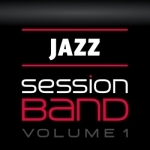
SessionBand Jazz - Volume 1
Music and Entertainment
App
All SessionBand apps now half price for a limited time only! Jamie Cullum: "An extraordinarily...
